The most expensive brandies in the world will set you back thousands of dollars. From black crystal bottles to limited releases to rare-aged classics, these brandies are the cream of the crop.
“Claret is the liquor for boys; port for men; but he who aspires to be a hero must drink brandy.” Samuel Johnson
The 18th-Century writer, critic, and political thinker held views on many subjects, and he never failed to express them. Clearly, he was a fan of brandy and thought that it possessed some desirable qualities, but as far as we know he had no favorite brand.
Just what is it about brandy that sets it apart from other fermented beverages? Why is brandy so special? It’s been around for centuries, it can be distilled from a number of different fruits, and it’s produced in many different parts of the world. Brandy is actually a generic name, even though it’s true that particular brandies are only produced in certain locales.
Today, the love of brandy crosses all boundaries of age, culture, price, and interest. The growth of the artisanal brandy market has been phenomenal in the last decade and seems destined to thrive as the commitment to local farms, orchards and distilleries continue to grow.
American brandies are not typically counted among the world’s best, but they have a long history. George Washington, the father of the country, operated five copper stills 12 months a year, according to historians, but he was not the first brandy distiller in the colonies. And Applejack, or brandy distilled from apples, is an old tradition in some parts of the USA.
Table of Contents
- Brandy is Versatile
- What to Know About Cognac
- All You Need to Know About Armagnac
- Is Calvados Considered a Brandy?
- Other Brandies from Around the World
- It’s More Than Just Taste!
- How to Judge a Brandy
- Here are the 14 most expensive brandies in the world
- 1. Louis XIII de Remy Martin Rare Cask Grande Champagne Cognac
- 2. Louis XIII Black Pearl
- 3. HINE 250 Years Decanter 1953 Cognac
- 4. Hardy Le Printemps Lalique Cognac Grande Champagne
- 5. Hardy L’Ete Lalique Cognac Grande Champagne
- 6. Hardy Privilege Caryota Lalique Cognac Grande Champagne
- 7. Hennessy Timeless Cognac
- 8. Cave de l’Hotel de Paris Grande Champagne Cognac
- 9. 1865 Manoir de Beraut Comte de Goyon Armanac
- 10. Lecompte Secret Calvados, France
- 11. Cognac Brugerolle 1795
- 12. Croizet Cognac Leonie 1858
- 13. Hennessy Beaute du Siecle Cognac
- 14. Henri IV Dudognon Heritage Cognac Grande Champagne
Brandy is Versatile
Brandy is not one of the most expensive liquors in the world but is among the most versatile. The fact that brandy is adaptable and versatile only adds to its popularity. Chefs use it not only for fabulous desserts but to flavor sauces and gravies, roasted meats and fowl, custards, and coffees, not to mention favorite desserts. Brandy is a favorite across generations and is constantly “rediscovered” by younger gourmands.
Brandy aficionados typically prefer theirs as an after-dinner digestif, served in clear crystal snifters or tulip-shaped glasses, undiluted, at either cellar temperature or room temperature, depending on the specific brandy selected. While cocktails such as the Brandy Alexander and Sidecar have long been a staple in upscale lounges, almost any bartender knows how to serve up 20th-Century classics like the B & B, Metropolitan and Brandy Smash (much like a Mint Julep) or lesser-known varieties like a Jack Rose made from Calvados, or the New Orleans favorite Vieux Carre. Servicemen from around the world once enjoyed Cognac and Coke in Paris because it was cheaper than whiskey or beer!
What to Know About Cognac
Cognac, after all, is simply brandy distilled from a particular grape in the Appellation d’Origine Contrôlée (or AOC) Cognac region of France. It is twice distilled in copper pot stills, primarily from the Ugni Blanc (Saint-Emilion) grape, although some producers add small amounts of Colombard and Folle Blanche. To earn the designation “cognac,” it must be aged in oak for at least two years, and the alcohol content must be at least 40%. Considered the upper echelon of brandies, all cognacs come from six distinctive geographic areas.
Each cognac has its own legion of connoisseurs.
All You Need to Know About Armagnac
Armagnac is another type of brandy, from the French region of Gascony, southwest of the Cognac area. Like cognac, it is distilled in copper, but only once, and then aged in oak. “Teenage” Armagnac is prized, but some consider it “overaged” if left for more than 20 years. Cognac, on the other hand, is distilled twice in pot stills, transferred to a new oak cask for one year, and then sometimes aged in used oak casks, commonly for up to six years.
Is Calvados Considered a Brandy?
When talking about French brandies, it’s impossible not to mention Calvados, a traditional brandy distilled from apples in the province of Normandy. Like Cognac and Armagnac, its production is limited to its specific region, although in other areas a similar product can be produced from apples and sometimes pears. In the United States, apple brandy is known as Applejack, or occasionally “hard cider.”
Other Brandies from Around the World
Too many countries to list individually produce some sort of liquor or liqueur (the difference is sometimes only in the mind of the imbiber, but liqueurs are normally sweet and reserved for after-dinner sipping), many of them known by other names. Grappa, sometimes known as an Italian brandy, is actually made using the grape pomace, the parts left after the whole grape is crushed to make wine, and it differs in this way from traditional grape brandies. It also has an alcohol content of between 35 to 60%. Most fruit-based brandies are about 40% ABV, which allows the flavor of the fruit to remain clear and strong.
- The notable Brandy de Jerez, from the Andalusia region of Spain. It is available in three styles: one-year-old Solera, three-year-old Solera Reserva, and Solera Gran Reserva aged for 10 years.
- Palinka from Hungary, a fruit brandy tradition that extends back to the 14th Century. Similar brandies from Slovakia and the Czech Republic are known as Palenka.
- Peruvian Pisco is unique. It is not aged in wood, but rather in clay pots, and it is not sweet. In addition, unlike other brandies, it is distilled at bottling strength.
- Rakia is a Balkan fruit brandy; different from Turkish Raki, which is anise-flavored and distilled from grape pomace, much like Ouzo.
- Germany produces “brown” brandies, including Asbach Uralt, once known as “German cognac,” until the word cognac was reserved for the French product following World War I. Ansbacl Uralt is the alcoholic ingredient of the popular coffee house drink, Rüdesheimer Kaffee.
- Framboise, distilled from raspberries, was originally produced in France but is now made in many other countries.
- Clear brandies, sometimes still known as “l’eau de vie,” are produced from a variety of fruits, including apricots, pears, grapes, and other fruits. One of the better known is the Swiss Kirsch, made from cherries. Most are unaged, light in flavor, and contain no added sugars.
Johnson’s views about brandy have been echoed by many others in the intervening centuries; when first distilled in France in the early 1300s, it was made as a medicine, and termed L’eau de vie, the “water of life.” The name stuck, and brandies today enjoy an esteem and command prices that few other liquors, or liqueurs, can fetch. Brandy morphed from being a healing and purifying agent to an alcoholic beverage that was first developed out of greed. A Dutch shipper, in an effort to cram more cargo into the hold of his ships, developed a way to separate the water out of wine. At the destination, water was returned to the highly concentrated alcohol in the casks, and it became known as “bradwijn,” or “burned wine,” which later became “brandy.” Or so the story goes!
It’s More Than Just Taste!
Just as with other pricey spirits, sometimes its the quality of the bottle or decanter that ups the dollar value of the alcohol. The most expensive brandies, by far, are sought-after Cognacs, and the most expensive of those are prized old vintages from distinctive makers, and those with particularly impressive bottles.
How to Judge a Brandy
For a brandy to be called Cognac, it must be made from specified grape varieties grown in the AOC of France. The typical cognac label will tell you how long the brandy has been aged and may supply additional information. For cognac and armagnac, the designations are standardized and controlled; for other brandies, labeling is, for the most part, unregulated.
The standard designations include:
- Three Stars or VS (Very Special): Stipulating that the brandy is a blend, with the youngest brandy cask-aged for at least two years.
- VSOP, meaning Very Superior Old Pale: The label might also say Reserve, or display Five Stars. The youngest brandy in this blend will have been stored for no less than four years in a cask.
- XO (Extra Old) or Napoléon: Six years is the minimum storage time for a blend to earn this designation.
- Hors d’âge (Beyond Age): An Armagnac designation that requires the brandy to be at least ten years old. It is sometimes used to market brandy that is simply beyond the “official” rating scale.
Bear in mind that these are minimum aging requirements, and highly regarded cognacs will contain blends that are at least decades old. That, of course, adds to the quality — and the price. And, in some cases, just as with other expensive liquors, it’s all about the “packaging.” Here are some of the most expensive brandies available. It may not be surprising that all of them are Cognacs. What may surprise you, though, is that prices have dropped over the past couple of years for some of the best of the best!
We’ve also included a couple of other types of brandy just for comparative purposes. We have limited the list (with a couple of notable exceptions) to bottles that can actually be purchased if you’re inclined to spend that kind of cash in this way!
Here are the 14 most expensive brandies in the world
1. Louis XIII de Remy Martin Rare Cask Grande Champagne Cognac
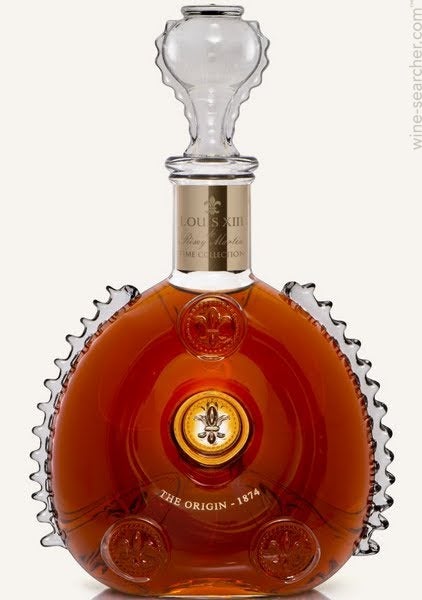
It is believed that there are fewer than 20 bottles of this particular blend, available primarily from dealers in Asian and American markets. It has a higher than usual alcohol content, and flavors that are described as intense and autumnal. The black crystal bottle, too, is unique, with a stylized fleur de lis stopper and unique crystal “buds” along the sides of the bottle.
Price: Just a couple of years ago, the asking price for a 750 ml bottle of this rare Cognac would have been nearly $10,000 higher. Today, you might find it available for around $35,000.
2. Louis XIII Black Pearl
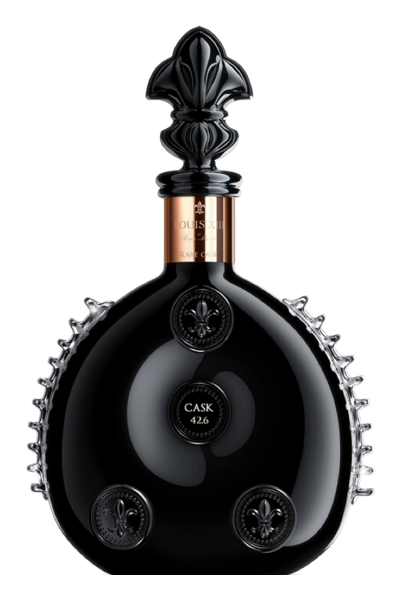
A limited-edition release of Louis XIII, the rare Cognac is from a single cask of the Heriard Dubreuil family private cellar. An impressive Baccarat crystal decanter calls to mind the original metal flask that became the inspiration for Remy Martin bottles and comes with a distinctive presentation case. When it was bottled, to celebrate the 140th anniversary of Louis XIII, 775 decanters were made available worldwide.
Price: Average price for a 750 ml bottle runs around $31,500; 1,000 ml bottles are also available, at prices that range upwards to about $65,000.
3. HINE 250 Years Decanter 1953 Cognac
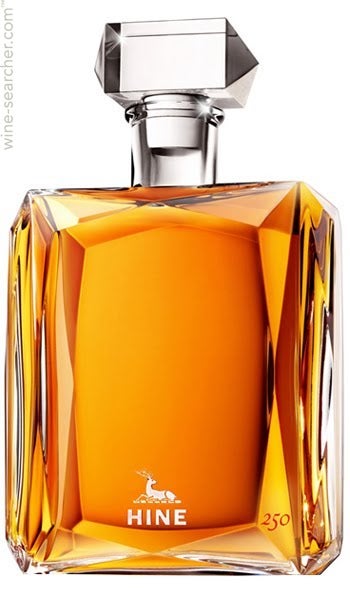
Described as a “truly great” Cognac, this sipping brandy is from the prime growing region in France, but the aging casks are stored in cellars in Bristol, England, giving the Cognac a distinctive nose and flavor. A total of 250 bottles were produced from a 1953 vintage to celebrate the Hine House anniversary. It is available in a beautiful geometric-style Baccarat decanter.
Price: $17,163, excluding tax and shipping. Due to limited availability, the price of this one is rising.
4. Hardy Le Printemps Lalique Cognac Grande Champagne
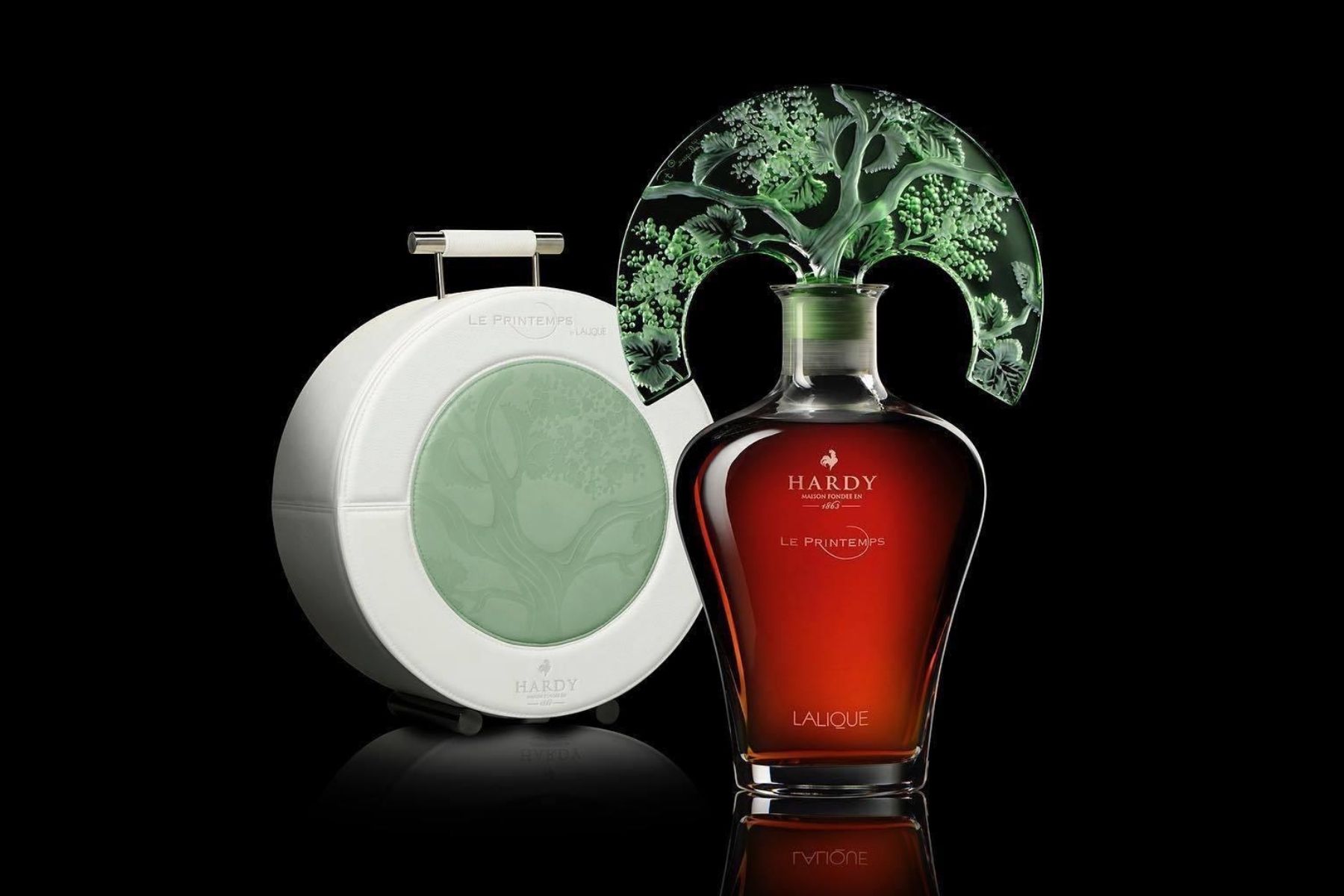
This Cognac, also classified Premier Cru from the Grande Champagne territories of Cognac, is a blend of small batches selected at the end of World War II. The Lalique crystal decanter is showy, designed with a patterned almond green “cap” and housed in a specially-crafted cask of white and pastel leather. It is reputed to be smooth and pleasing in character, with tones of chocolate and coffee.
Price: Average price for 750 ml was $15,291.
5. Hardy L’Ete Lalique Cognac Grande Champagne
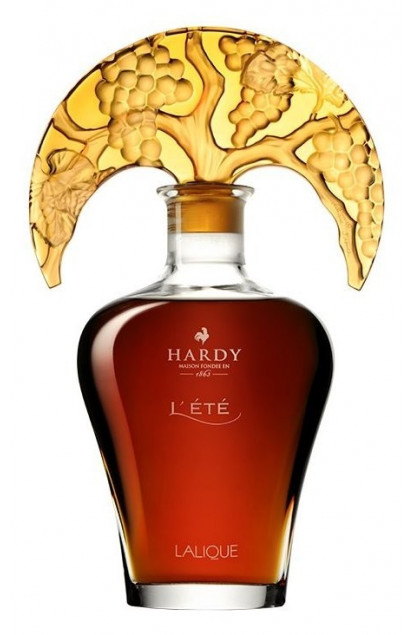
A “sibling” to the Hardy Cognac listed above, the differences between the two are subtle, but this one is said to have flavors of cinnamon, honey and apricot, with a blend of six Cognacs, some nearly 100 years old. It, too, is presented in a Lalique decanter, this one with a cap flaunting a golden grapevine pattern.
Price: Ranging from under $9,000 for 700 ml to an asking price of $31,999 for 1000 ml; the average price paid for 750 ml is listed as $14,465.
6. Hardy Privilege Caryota Lalique Cognac Grande Champagne
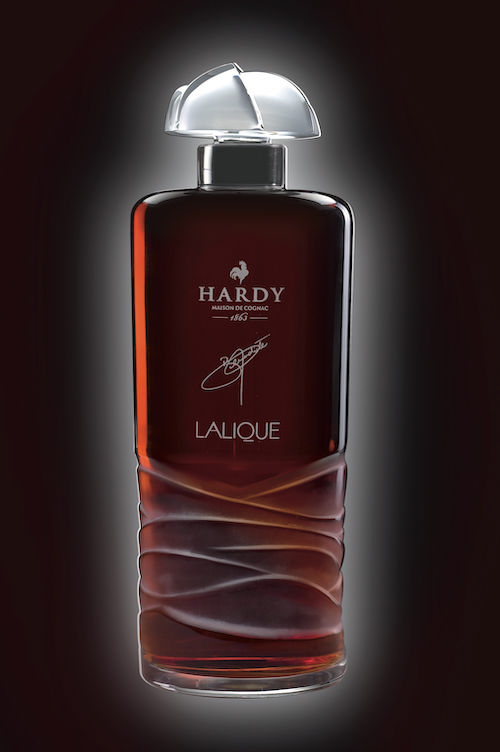
Bottled in 1983 from Cognacs distilled before World War I, this standard bottle comes with a limited edition Lalique crystal decanter as a bonus, in a red Hardy presentation gift box. If you’re looking for a thoughtful gift for a special occasion, could this be it?
Price: According to Wine-Searcher, the average cost runs approximately $12,700.
7. Hennessy Timeless Cognac
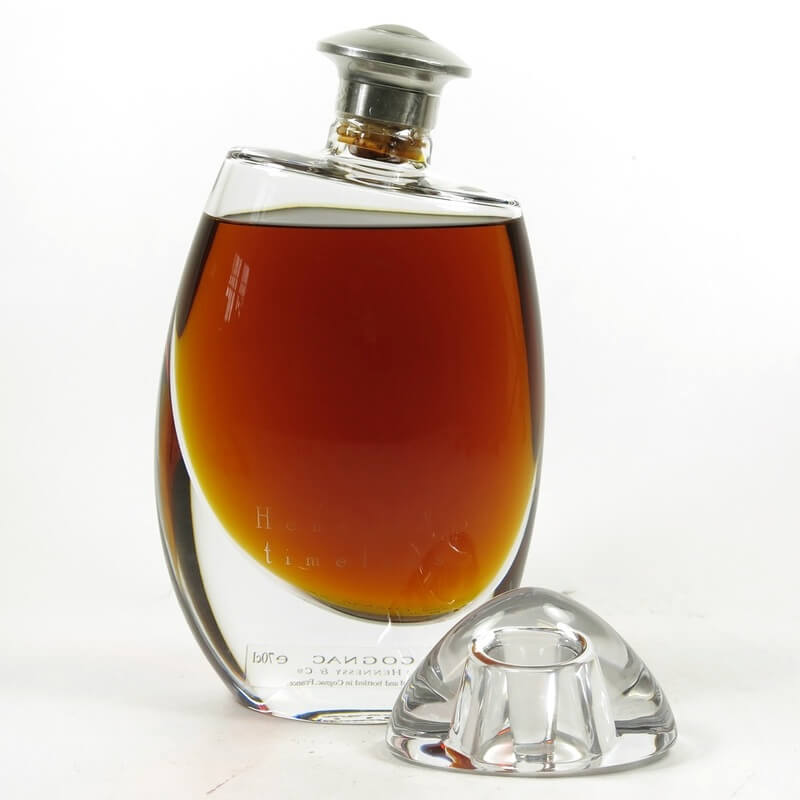
If you thought stock market prices were volatile, you might wonder why the price of this limited edition Cognac lost more than a third of its value over the last year! A blend of 11 20th-Century vintages, it surely makes for great sipping!
Price: You can buy a bottle for $10,500 and change, or maybe even less, down from over $16,000 in 2018.
8. Cave de l’Hotel de Paris Grande Champagne Cognac
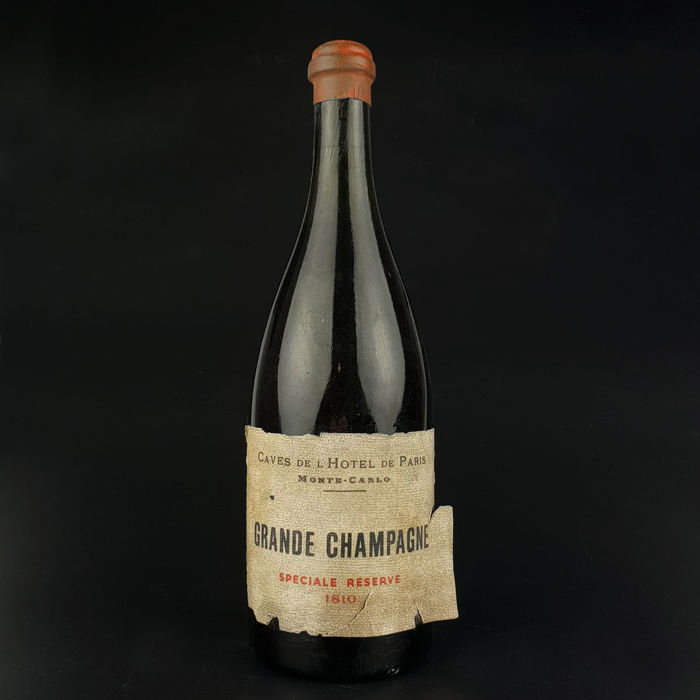
One of a selection from the legendary cellars of the Monte Carlo Hotel, this would be treasured by a true Cognac aficionado, not only for its provenance and rarity but for the stories surrounding it! There’s nothing special about the bottle’s shape or the tattered label, and none but the most intrepid collector would want to open it. But, oh the stories that could be told!
Price: More than $10,000 for a bottle of this very old, very rare Cognac, if you can find it!
9. 1865 Manoir de Beraut Comte de Goyon Armanac
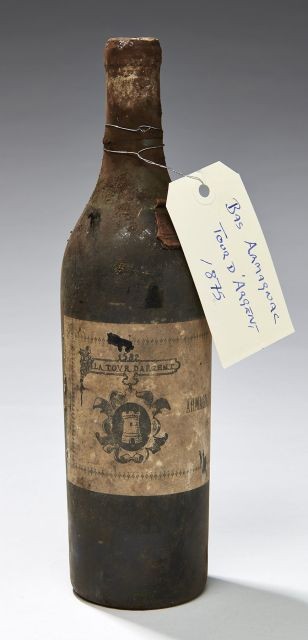
A dusty old bottle of Armagnac from the last 1950s or early 1960s, the grapes are thought to have been grown for the French general Charles-Marie-Augustin (1803-1870), who was named Comte de Goyon in 1865 and served under Emperor Napoleon III.
Price: Actually, we do not know what the actual sales price was, but it was listed for sale on an antique wines and spirits exchange for the equivalent of approximately $8,590.
10. Lecompte Secret Calvados, France
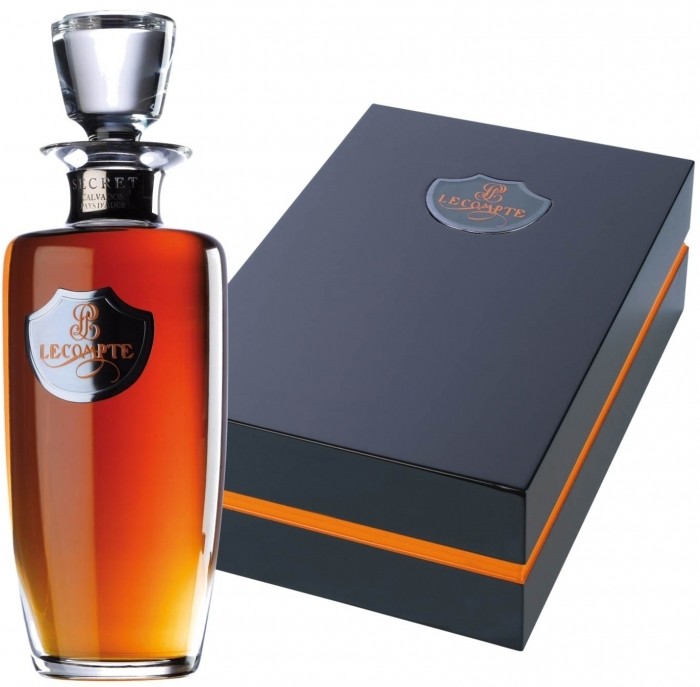
Perfect as a mid-meal digestif, which is traditional in Normandy to make way for more food, or for enjoying with a round of Camembert, the traditional cheese of the region, this French brandy traditionally distilled from apples and pears is a delightful alternative to Cognac.
Price: Approximately $2,500 for a 750 ml bottle, which could be considered a bargain in this crowd!
And then there are the record-setters!
11. Cognac Brugerolle 1795
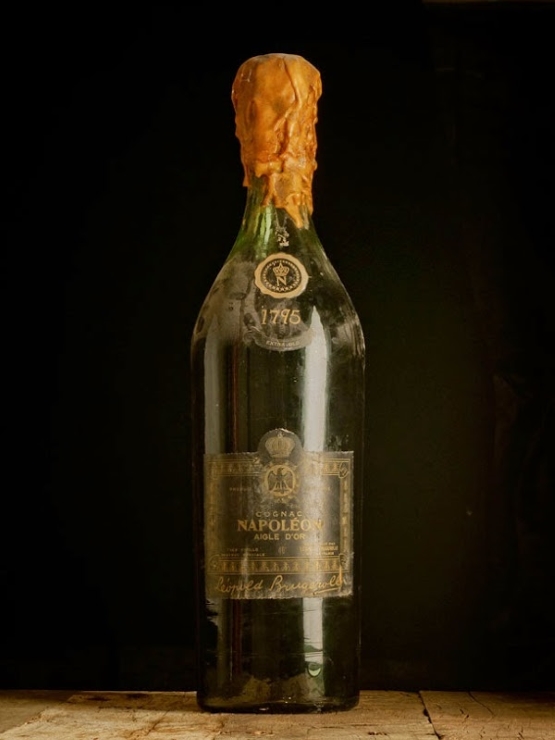
Napoleon himself was accompanied by a bottle of 1795 cognac on his conquest to rule the world. Part of an individual collection of vintage spirits, the hand-blown six-liter bottle was purchased at a Christie’s auction held in 1990 in Chicago for an undisclosed amount. The Dutch collector held it for more than 20 years, before deciding to liquidate his collection. He retained, however, an even older bottle of Cognac, dating to 1760!
Price: Considered to be the last of its kind in the world, the bottle sold at an auction for $149,943.
12. Croizet Cognac Leonie 1858
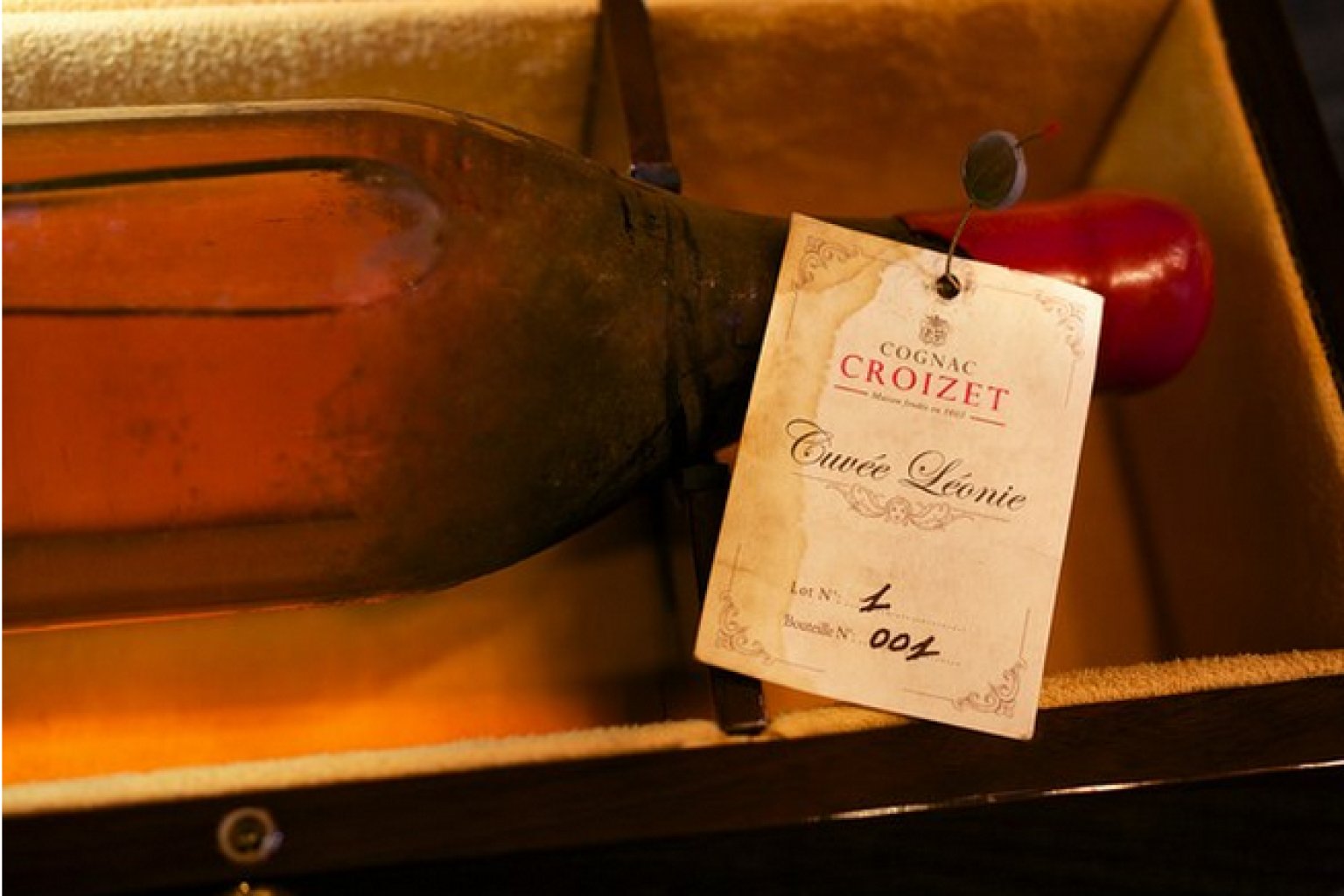
This one holds a Guinness World Record as the most expensive cognac bottle. Another bottle of the same cognac is said to have been smuggled out of France following WWII and opened later by President Dwight D. Eisenhower. Part of its rarity, and its worth, is due to its existence as a Pre-Phylloxera Cognac, meaning that it was distilled from grapes that were grown before an insect virtually destroyed the region’s grapevines. It is believed that the taste of Cognac was changed forever afterward.
Price: The bottle sold at an auction for $156,760 in September 2011.
13. Hennessy Beaute du Siecle Cognac
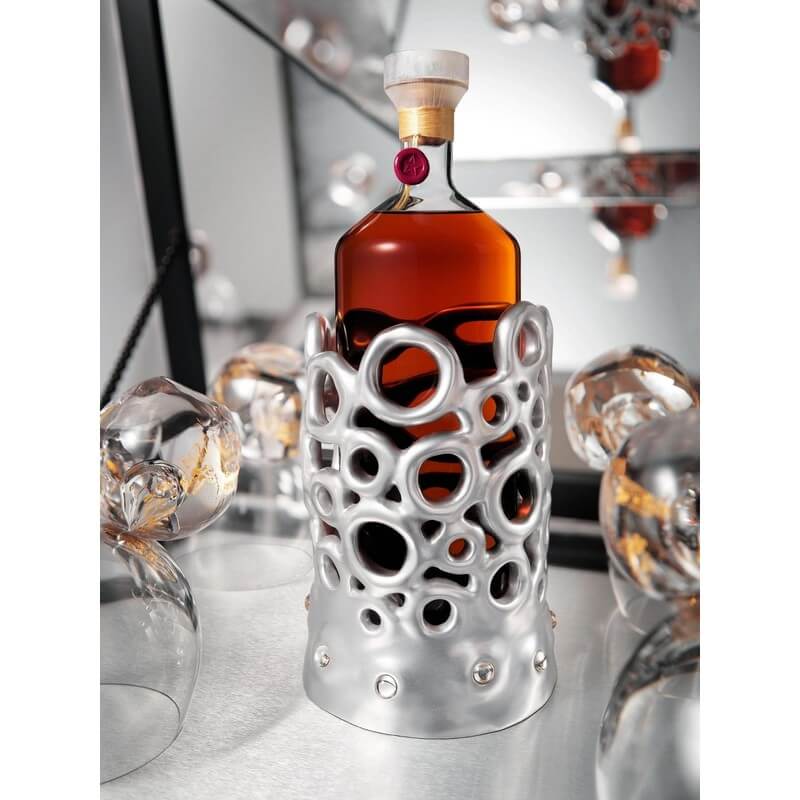
No doubt it’s great Cognac, but the high price of this blend is associated as much with the artistic appeal of the bottle and its presentation case as much as with the rarity of the Hennessy Eaux-de-vie. The limited-edition includes an exceptional covered presentation case, bottle holder, and four glasses, designed by French artist Jean-Miche Othoniel of aluminum and brass. Only 100 were produced.
The Price Tag? A whopping $194,927!
This makes Hennessy Beaute du Siecle Cognac one of the most expensive brandies in the world.
14. Henri IV Dudognon Heritage Cognac Grande Champagne
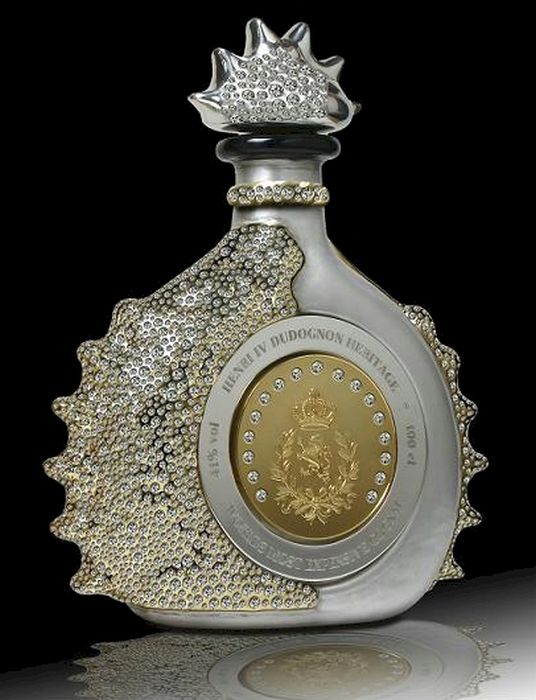
Known as the DNA of Cognac, this is the ultimate brandy, aged in barrels for more than 100 years, and with an alcohol content of 41%. But the bottle is what’s extraordinary. Crafted of crystal, and then dipped in gold and platinum and adorned with diamonds, the package weighs in at about eight kilograms or just over 17 pounds.
The Price is an equally extraordinary One Million Pounds Sterling, the equivalent of more than $1.227 million in today’s dollars.
In good times and bad, brandy has served as a tonic. So, it these times, perhaps it’s appropriate to reconsider the pleasurers that brandy can bring to life. As George Sainsbury, the English writer, historian, and wine connoisseur noted: “Alcoholic drinks, rightly used, are good for body and soul alike, but as a restorative of both there is nothing like brandy.”
